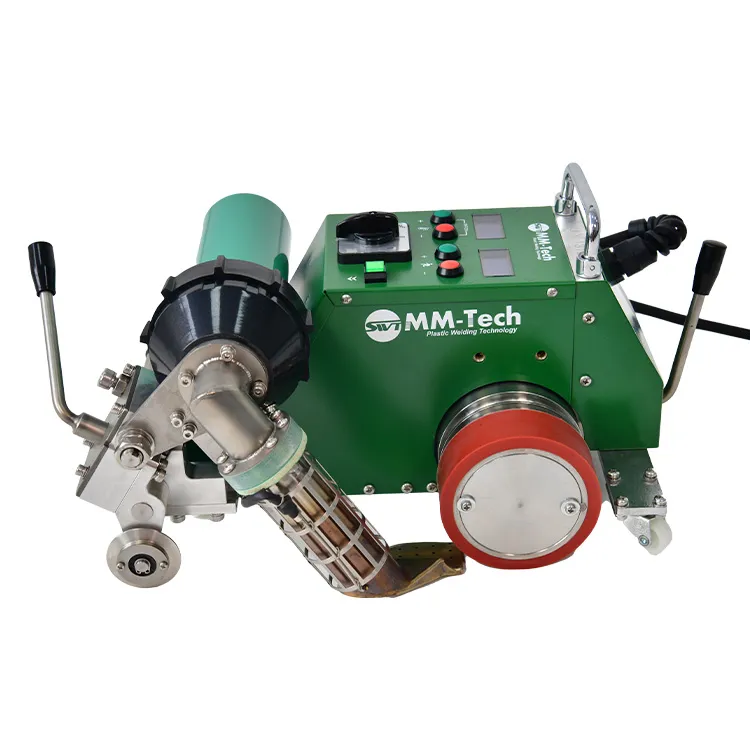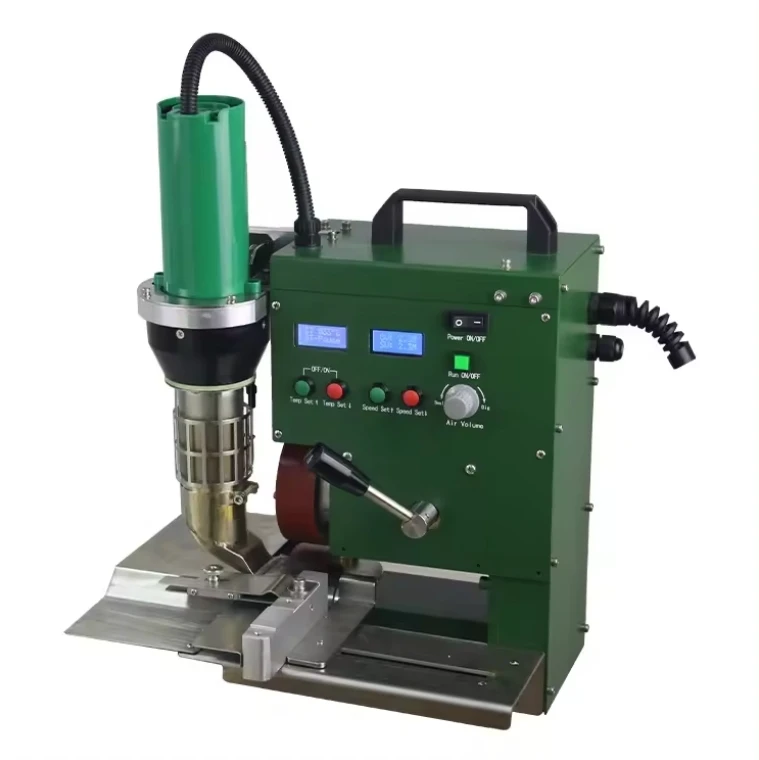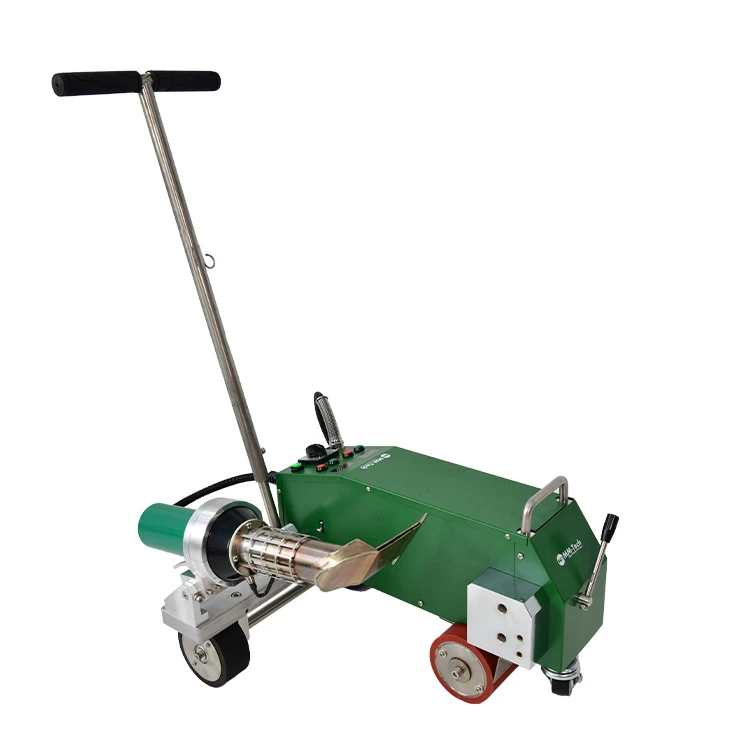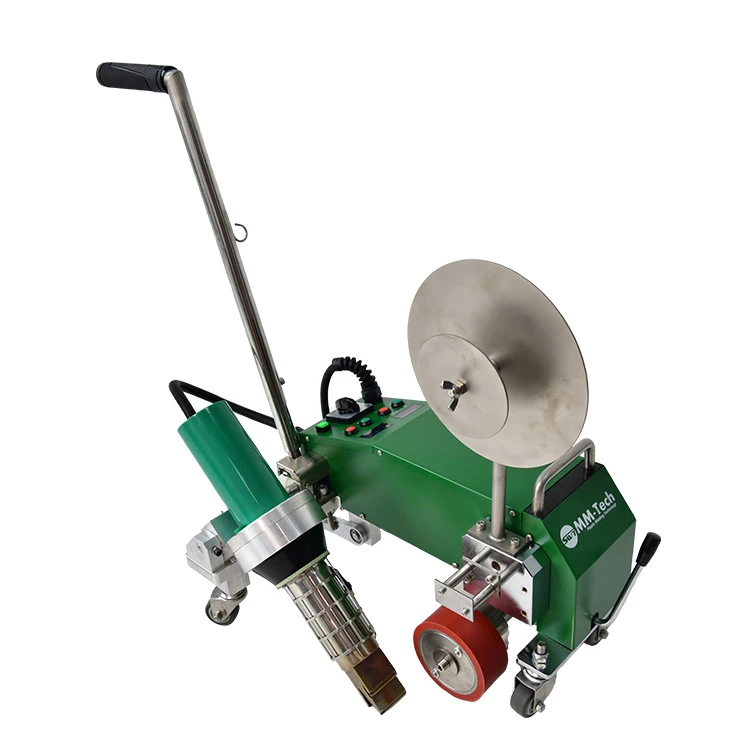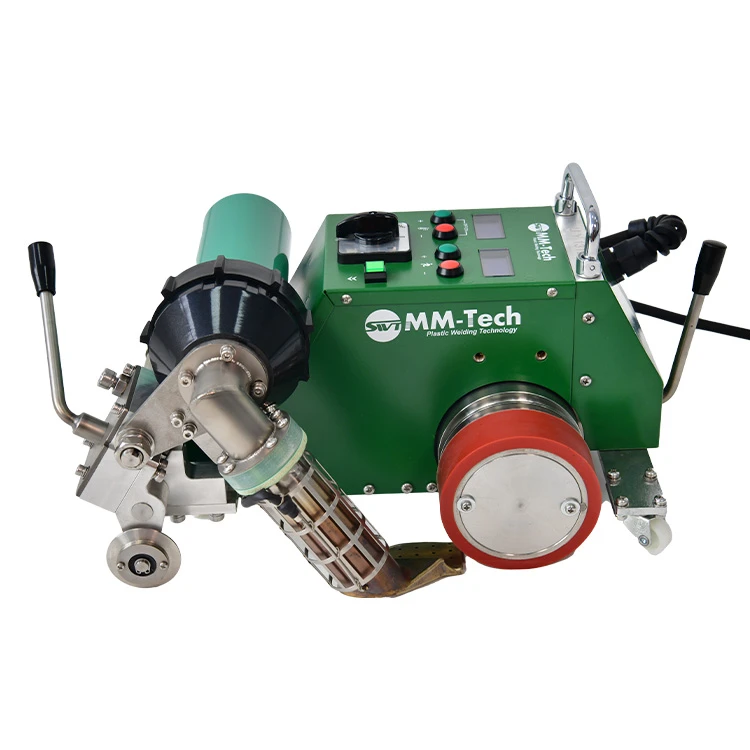-
 Email:info@peweldingmachine.com
Email:info@peweldingmachine.com
-
 +86-137 3974 5191
+86-137 3974 5191
-
 Add:
Add:NO.355,Youyi Street,Qiaoxi District,Shijiazhuang,Hebei,China.
Tarpaulin Hot Air Welder
Banner welding machine is a tool specifically designed to efficiently weld large banners, tents, and fabric materials. The machines are often used in the printing, advertising, and textile industries where the creation of large banners, billboards, and signs is essential.Banner machines are designed to handle the unique challenges of welding large pieces of material. They can join materials together with smooth, clean surfaces to create seams that are both aesthetically pleasing and structurally strong enough to withstand outdoor elements such as wind and rain.
The machines can weld seams, hems, and reinforcements, ensuring that the banner is well sealed and durable. The process is very precise, and the machines typically include adjustable temperature, speed, and pressure settings, allowing the operator to customize the welding process based on the materials used and the desired results.
What Is Welding Banners?
Welding banners is a specialized process used to join two or more pieces of fabric, typically made from materials like PVC, vinyl, or polyester, to create large, durable banners. This process involves the use of heat and pressure to bond the materials, making it an efficient and reliable method for producing banners that are strong, weather-resistant, and suitable for both indoor and outdoor use. The welding process ensures that the banner has a smooth, seamless finish, which not only improves the appearance but also enhances its durability, preventing the edges from fraying or coming apart.
The most common technique for welding banners is heat-sealing, where a welding machine applies controlled heat to the edges of the materials, causing them to melt and fuse together. This method creates a tight, strong bond without the need for stitching, making it ideal for large-format projects such as promotional banners, billboards, trade show displays, and outdoor advertising. The welded seams are smooth, providing a clean, professional look while ensuring the banner can withstand harsh weather conditions such as wind, rain, and sun exposure.
Welding banners is particularly advantageous for high-volume production, as it allows manufacturers to create seamless, long-lasting banners quickly and efficiently. The process is more time-efficient than traditional methods like sewing and reduces the risk of defects, such as uneven seams or weakened points. Additionally, welded banners are often more resistant to tearing and can handle higher levels of stress, making them suitable for use in demanding environments.
Welding banners is a highly effective method for creating strong, durable, and high-quality large-format banners. It is widely used in industries such as advertising, events, and marketing to produce visually striking and long-lasting promotional materials.
How To Weld Plastic With Hot Air?
Welding plastic with hot air is a popular method used for joining thermoplastic materials such as PVC, PE, PP, and others. The process involves using a hot air welder, which blows a stream of heated air onto the plastic, causing it to soften and become pliable. Once the material reaches the right temperature, a filler rod (usually made from the same type of plastic as the base material) is applied to the joint area, and the two surfaces are fused together as they cool and solidify.
To weld plastic with hot air, the first step is to prepare the materials. The surfaces to be welded should be cleaned thoroughly to remove any dirt, oil, or contaminants that could interfere with the bonding process. If necessary, the surfaces can also be roughened to enhance adhesion. Next, set the hot air welder to the appropriate temperature based on the type of plastic being welded. Plastics generally melt between 250°C to 300°C, but the exact setting will depend on the material.
Once the welder is set, direct the heated air onto the joint area, keeping the nozzle at a consistent distance from the surface. As the plastic softens, apply the filler rod to the seam. The hot air will also melt the rod, causing it to fuse with the workpiece. Move the nozzle steadily along the joint to create an even weld. It is important to maintain a consistent speed and apply even pressure to avoid weak spots or excess material.
After the weld is complete, allow it to cool and solidify before handling. The result is a strong, durable bond that is resistant to stress and environmental factors. Hot air welding is ideal for plastic repairs, fabrication, and creating seamless joints in a variety of applications.
